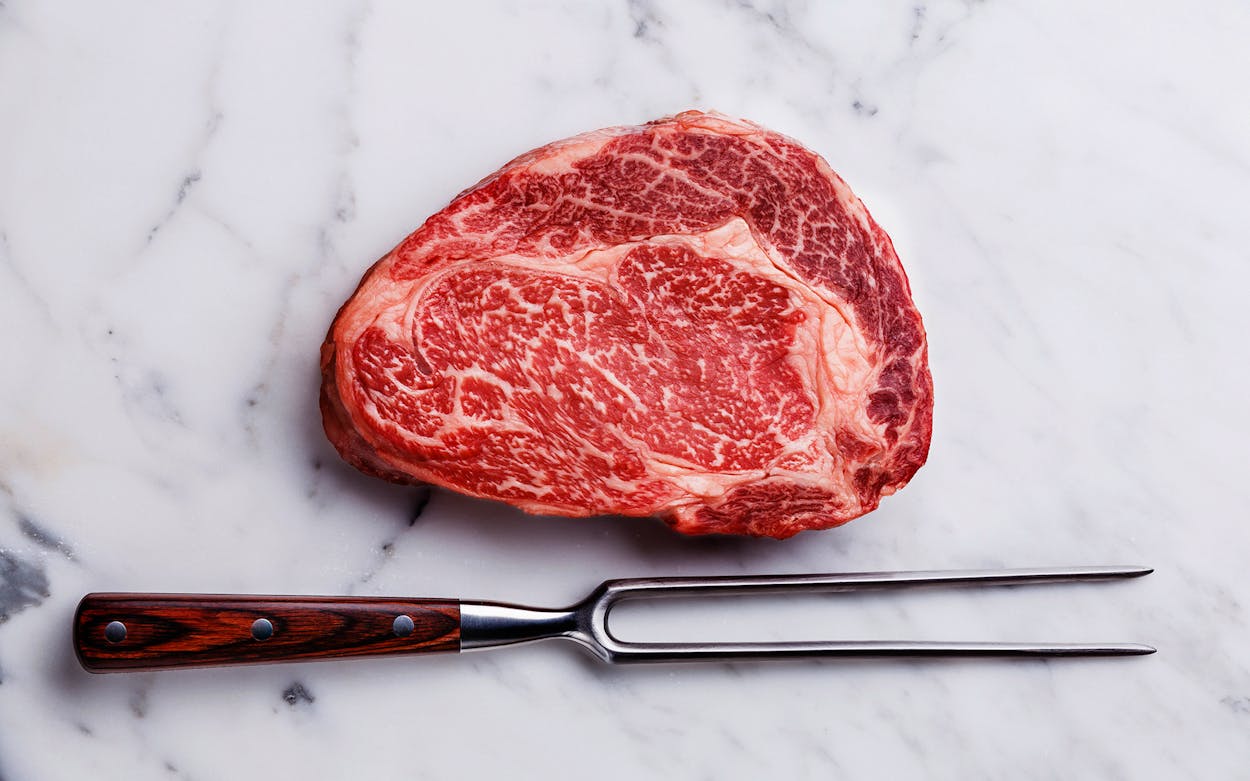If you enjoy eating or smoking Prime grade beef, prepare for a dip in the national supply. A new carcass camera-grading technology, likely due to inaccuracy, provided elevated marbling scores to USDA graders from February through mid-October. The Gigabit Ethernet, or “Gig E,” is used to determine the grade of half the nation’s beef, and a recent correction in the calibration has sent the supply of Prime and Choice beef tumbling down.
The USDA’s primary job is to ensure the safety of the meat you consume. Their inspectors are sent to slaughterhouses across the country, at taxpayer expense, to make sure filthy carcasses don’t enter the food supply. But there’s another arm of the USDA that inspects for meat quality. They show up to the packing plants on the packers’ dimes and determine beef grades: Prime being the best, followed by Choice, Select, and the rest.
It used to be that these inspectors put their eye on every carcass. They’d stare at the face of the ribeye cut between the twelfth and thirteenth rib and check for marbling within the meat, the thickness of the outer fat, and the ossification of the cartilage. In 2009, the USDA allowed the use of cameras to assist in determining the marbling score. At the time, the technology was billed as more accurate than the human eye—especially given the ever-increasing speed at which the carcasses came down the line—and came into wide use.
See grading cameras at work at the 11:10 mark in this USDA video
The USDA’s current upper limit on what is known as “line speed” is nearly 400 cattle per hour, or one steer every nine seconds. Dan Hale, a meat science professor at Texas A&M, described the problem in a 2010 article. “A grader must assess carcass maturity, marbling score, ribeye area, fat thickness, the amount of fat in the kidney, pelvic and heart regions, and yield and quality grades,” all within that tight timeframe. And so the USDA welcomed the help of a camera to provide a marbling score. Dr. Jeff Savell, also of Texas A&M, says the school—which is involved in the National Beef Quality Audit every five years—found no accuracy problems with the technology in 2011 or 2016. But Savell says they haven’t had the chance to use, let alone audit, one of the new Gig E (no relation to Gig ‘Em) cameras that came into use this year.
It’s unclear what triggered the recalibration a few weeks ago. Looking at 2016 data, the national average of Prime and Choice beef has seen little variation year over last, that is until the cameras were corrected. The amount of Prime beef coming out of Kansas and Nebraska packing plants has taken a downward trend, while the numbers out of Texas have been largely unchanged (which may be due to fewer Texas plants using the technology). Savell guesses that it was just a hiccup in the process of bringing Gig E into use.
Savell likens the camera-generated grades to computer-generated strike zones in baseball. The umpire behind the plate introduces a human factor that with meat comes in the form of USDA graders. Before the first cameras were put into use, there was an effort to dial in its grading pattern to better mimic the grader’s judgment, and that’s what is likely happening with the Gig E now. But in baseball, the ump pays close attention to each and every pitch.
The speculation about how the calibration might affect Prime beef supplies has moved prices up. The hiccup here with the Gig E brings up another question about the automation of what used to be done solely by graders. This automation’s purpose is to help cope with fast-paced line speeds. The Gig E is supposed to provide a speedy and accurate marbling score in response, but there are plenty of other scores where there isn’t yet an automated camera to do the job. The DEXA X-ray is currently being tested to assess beef yield grades, and who knows what’s next? Let’s just hope they work out any calibration issues before these new systems go into full operation. These cameras shouldn’t be adding any fat.








